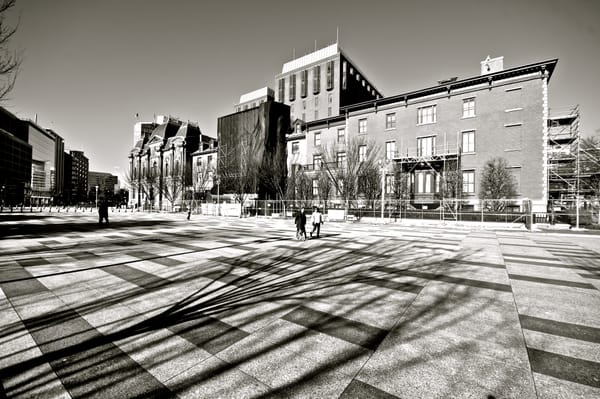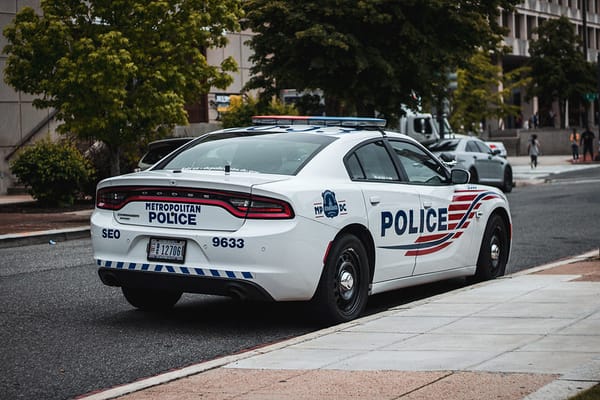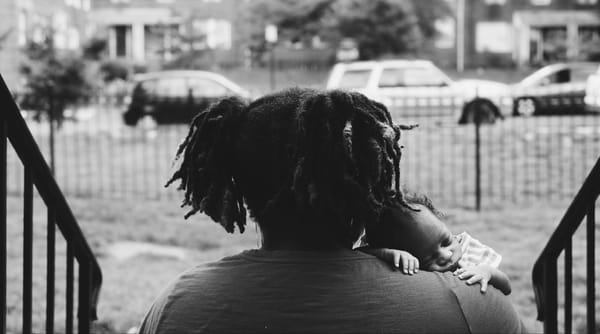Oops! Let's try again: That ranked-choice voting initiative, explained
Plus, scenic fall walks, seasonal cocktails, weekend events, and more.
Forgive me, friends! Guess I was a little too excited for this issue and hit send a bit early on the previous email. Anywhoo, welcome to our latest newsletter, headlined by a comprehensive explainer on D.C.'s ranked-choice voting initiative. We're also falling into Autumn with more recommendations—this time, it's scenic walks and seasonal cocktails. And we, of course, have lots of weekend events. My Ask A D.C. Native column is also back this week. Are you a legit D.C. resident or still a transient? I'll be the judge of that! And don't miss our eviction guide translated en español and stop by You Street for a quick poll about how life could be better for you in D.C.
Hope you enjoy!
- Christina Sturdivant Sani
D.C.'s ranked-choice voting initiative, explained
Initiative 83 could dramatically upend D.C.'s voting process and open critical elections to tens of thousands of new voters. Here's what you need to know.
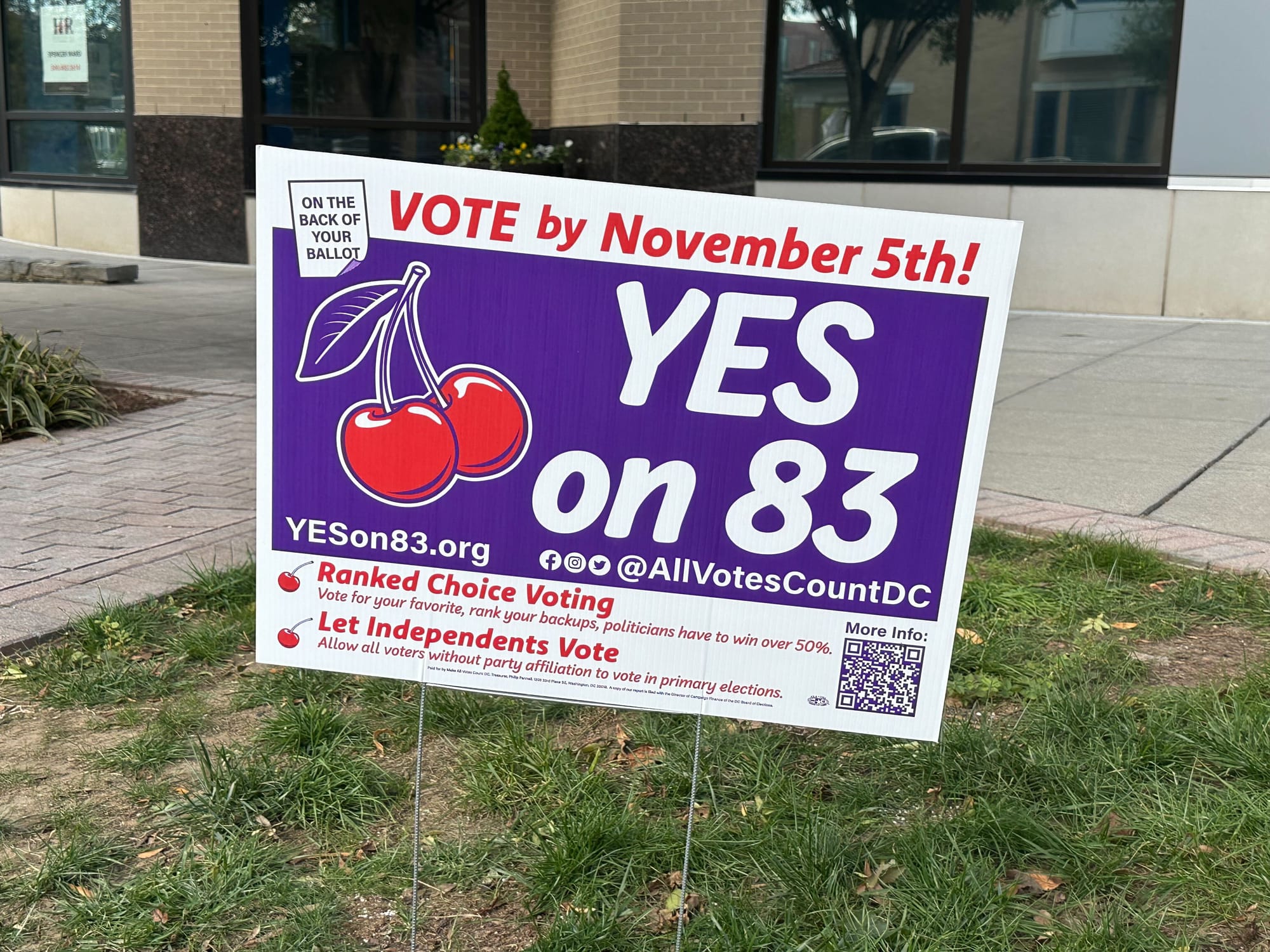
Initiative 83 is a ballot measure that seeks to bring ranked-choice voting to the city’s elections and to allow independent voters – those not registered as a Democrat, Republican, or Statehood Green – to participate in the city’s primary elections, which are currently only open to voters registered with those parties.
OK, so what’s ranked-choice voting?
Most elections in the U.S. – including in D.C. – operate according to the basic principles that each voter gets to pick a candidate in a specific race and that the candidate with the most votes wins, whether they get a majority of votes (more than 50%) or a plurality (less than 50%, but more than their competitors). This is called plurality or first-past-the-post voting. Ranked-choice voting, on the other hand, allows voters to rank candidates in order of preference.
Why would D.C. need ranked-choice voting?
Proponents of Initiative 83 say one of the biggest drawbacks of the city’s current system is that the winner of a crowded contest may only get a relatively small fraction of the total votes cast. In a fictional scenario where you have five candidates running for mayor, the ultimate winner could come away with, say, 33% of the vote – well below majority support.
Additionally, supporters of ranked-choice voting say the system gives voters the opportunity to vote for candidates they truly believe in without worrying about the spoiler effect or about throwing away their vote on a candidate who seems unlikely to win. Proponents also believe that ranked-choice voting would minimize negative campaigning, largely because candidates would be deterred from attacking any candidate in the hope that that candidate's supporters might still rank them second on the ballot.
What are the possible drawbacks to Initiative 83?
Critics of ranked-choice voting say that the system would ultimately be too complicated, possibly resulting in confused voters disenfranchising themselves by not ranking their preferences for all the candidates in a particular race. And they worry that the impact of that potential confusion could be more severely felt in low-income communities in D.C.
As for opening primaries to independent voters, critics say that Initiative 83 would unfairly allow unaffiliated voters to influence the direction of a political party they are not even ideologically committed to. So, since D.C. is largely a Democratic town, some are concerned that conservative-leaning independent voters with no allegiance to the Democratic Party and its principles could play an outsize role in determining who wins and loses specific races.
Our favorite fall walks around D.C. (and beyond)
Fall is famously one of D.C.'s only tolerable seasons, a few months of pleasant-enough weather leading into the dead and freezing winter. Before we're forced to hide from the darkness till March, some 51st team members have curated a list of beautiful fall walks in the D.C. area that you may feel inspired to try for yourself.
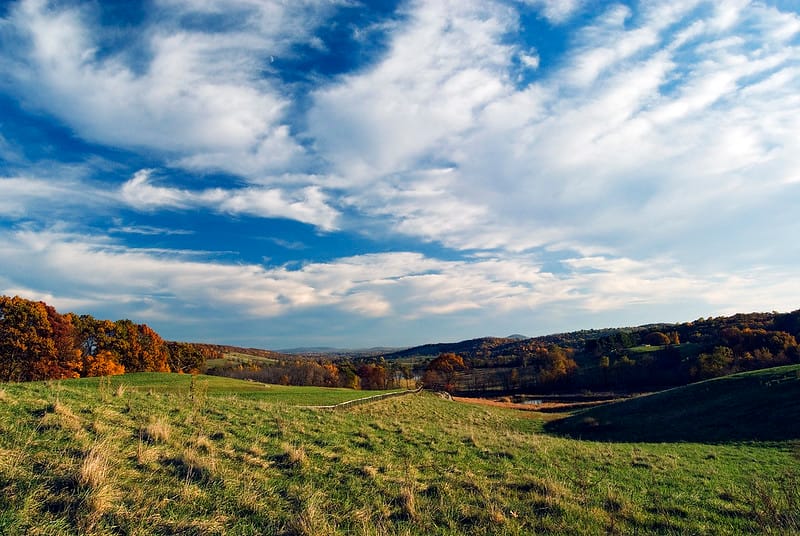
C&O Canal Towpath
For fall walks in D.C., the C&O Canal Towpath is hard to beat. While the most stunning vistas are in and around Great Falls Park, the parts of the trail you can access from Georgetown don’t disappoint. There’s something so magical about a trail hugged by water on both sides – the historic canal to your right, and the rugged Potomac to your left. Earlier in the season, you can forage paw paws, and later on the silver maples turn brilliant shades of yellow. Every time I see a blue heron take flight, turtles clustered on the tip of a log, or a fawn dash across the trail, I can’t believe I’m in a major city. – Abigail Higgins
Rock Creek Cemetery
My favorite walk is around rock creek cemetery. It’s beautiful every season but in fall she really sings! There are some incredibly old big trees and interesting headstones to look at, including the iconic grave of Evelyn Y. Davis, which I’d admired for years before learning the lore thanks to Rachel Kurzius’s DCist article. – Maddie Poore
Sky Meadows State Park
Pretty much everyone knows that for the ultimate fall foliage views, you head to Skyline Drive in Virginia’s Shenandoah National Park. But that’s also the problem: when you go you’ll be there with pretty much everyone else. For a placid alternative, try Sky Meadows State Park in Delaplane. The 1,864-acre park is set amidst the rolling hills of the Virginia Piedmont, with ample options to picnic, hike, or just relax on one of the open meadows. The sweeping views from the 1.2-mile Piedmont Overlook Trail aren’t to be missed, especially on a cloudless fall day. – Martin Austermuhle
12 things to do around D.C. this weekend
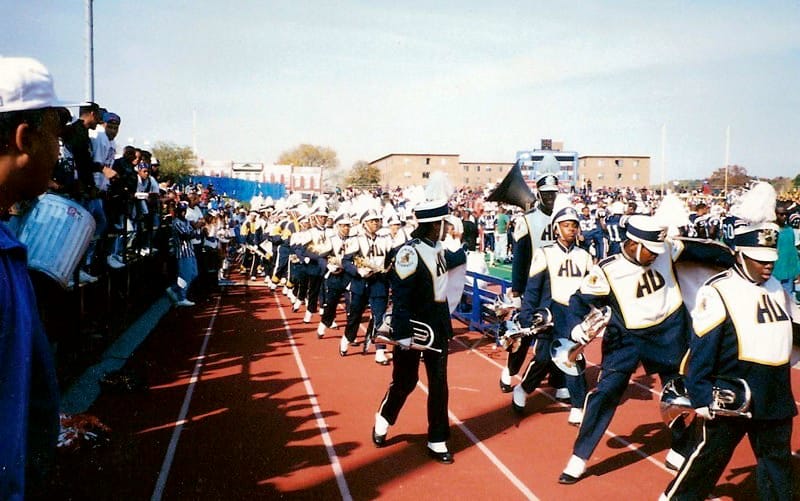
This weekend is dominated by Howard University Homecoming events – and rightfully so, since it’s the centennial celebration of one of the very first HBCU homecomings. Celebrate with a step show, a bar crawl, or a parade through Shaw. You can also catch screenings at the Immigrant Film Festival, sip wine at Union Market, and more.
THURSDAY, OCTOBER 17
Immigration Film Fest
In-person film screenings throughout the weekend will include a documentary about an immigrant ultimate frisbee team and a short about Western Sahara told through the eyes of refugee school children. Virtual screenings will continue throughout the month with films from across the world, including South Africa, Mexico, and Nigeria. (Various locations; Various times; $35-$75)
FRIDAY, OCTOBER 18
Greek Step Show | Homecoming 100
This fan-favorite event is sure to be spectacular for Howard’s centennial homecoming. The tradition of stepping is “part entertainment, part history lesson, part ancestral homage, and part prideful boast,” reads the event page. Featuring Howard’s Divine Nine, this is no doubt the best way to experience an HBCU step show. (Howard University’s Burr Gym; 8 p.m.; $40-$60)
SATURDAY, OCTOBER 19
DC Wine Fest
Whether you’re a sommelier or just a weekend wine lover, spend the day sampling natural wine, sparkling wine, wine cocktails, small-batch honey wine, and a variety of varietals curated by purveyors across the District, Virginia, and beyond. Not a viticulture enthusiast? There will also be vodka and rum tastings and food offerings that include cookies and crab cakes. (Dock 5 at Union Market; 12 p.m. - 10 p.m.; $35-$55)
SUNDAY, OCTOBER 20
Black on the Block
Held in a different city each month, D.C.'s edition of Black on the Block was timed with Howard’s homecoming. The event will feature a curated selection of over 100 Black-owned businesses, including artists, jewelry makers, and fashion designers. There will also be food and live music. (Nationals Park; 1 p.m. -7 p.m. $15)
Ask a D.C. Native: How long does someone have to live in D.C. before they aren’t a transient?
Hint: It's not just about longevity.
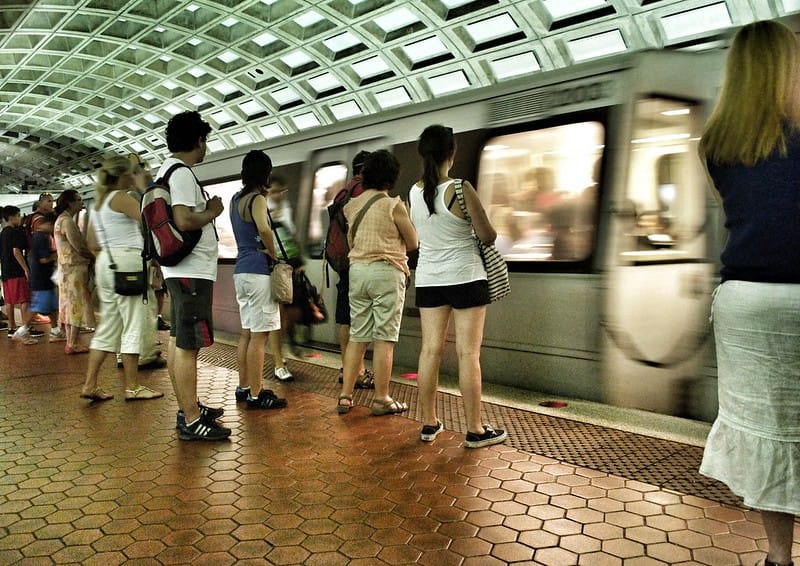
In Washington, D.C., a government town that runs on a four-year cycle, I’d say at least five years of living in the city could get you over the hump from transient to legit resident.
But using time as the only benchmark is simplistic and shortsighted. It’s not just how long you’ve been in the city, but how acquainted you’ve become with it. How well do you understand its culture, norms, and people? Are you plugged into your immediate community? How well do you know other parts of town?
That said, in addition to the five-year minimum criteria, I brainstormed a list of additional boxes to check to move from transient to well-adjusted resident.
You can get around on public transit.
While WMATA has no shortage of issues, the Washington region does have one of the largest public transit systems in the country. Even if you have a car, chances are you’ve caught the Metro at some point to avoid sitting in traffic, searching for parking, or paying a meter. If you’ve lived in the city for at least five years, you should have a good grasp on how to navigate its public transportation. This means I don’t expect you to spend more than a minute glaring at a Metro map like a skittish tourist during Cherry Blossom season. You should also know such basics as which lines converge at major transfer points like Gallery Place. At the very least, know which buses traverse your neighborhood and where they end up.
You’ve visited all 8 wards.
D.C. is a city of communities, each with its own identity. Spending all or the majority of your time on one side of town limits your understanding of how diverse the city is—in its residents, experiences, and landscapes. While I don’t expect you to visit all 131 neighborhoods, after five years I imagine you’ve ended up in every ward at some point for work, socializing, dating, or volunteering. If not, you have more exploring to do before you can shed your transient identity.
3 fall cocktails I tried this week
In our recurring Arts & Eats series, we’ll tap a plugged-in local to take us on a D.C. tour de food (or arts). This week, D.C. native and essayist India Kea shares what happened when a self-proclaimed "fall hater" was tasked with crafting autumn cocktails at Mount Pleasant speakeasy OKBP.
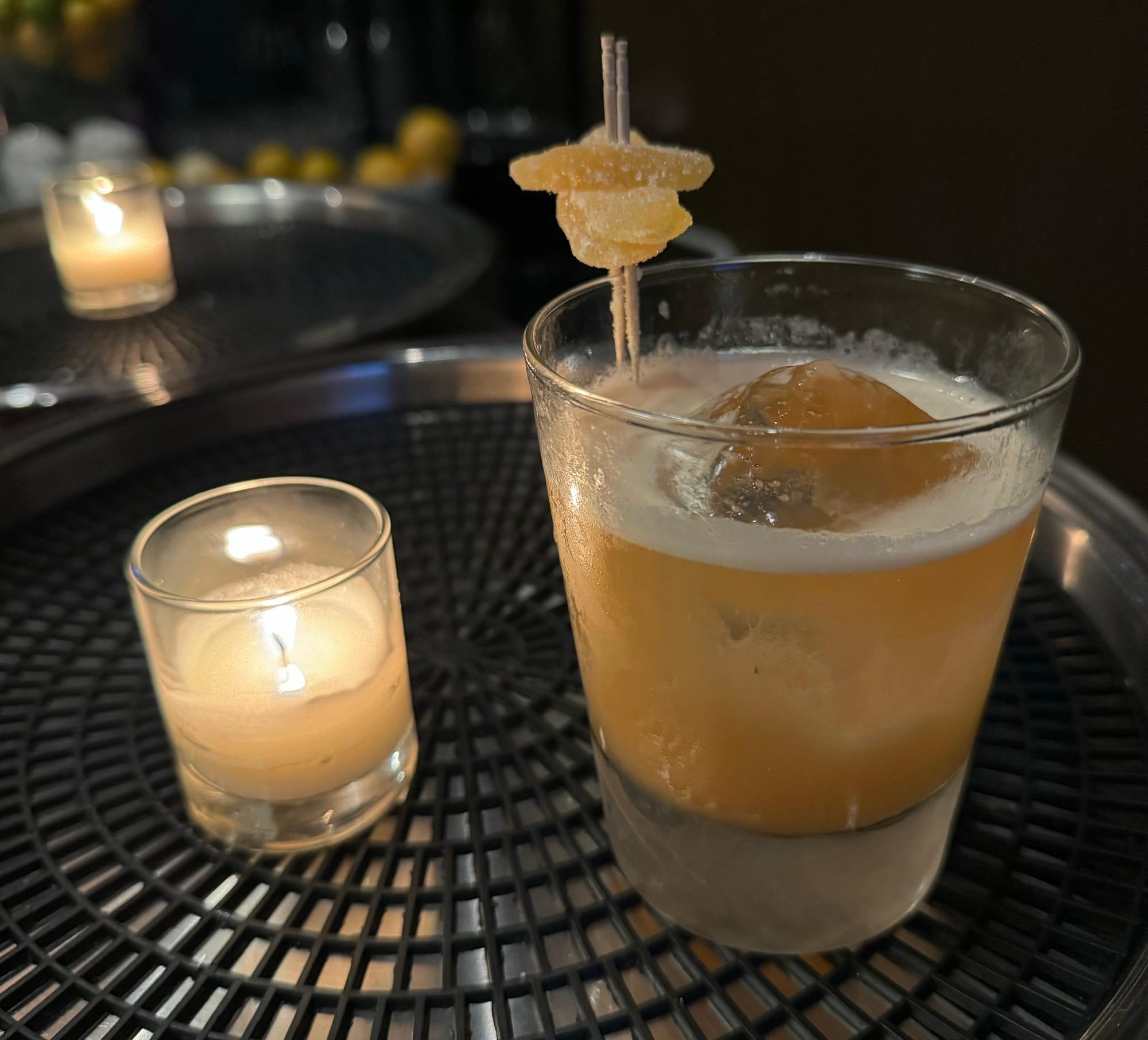
After a week of gloomy weather, the sun finally made a guest appearance. It seemed that this year’s fall still had her sandals on in October, and so did I, as I headed back to my old stomping grounds for a few cocktails at OKBP—a speakeasy discreetly tucked beneath a dentist’s office in Mount Pleasant. I indulged in three bartender’s choice drinks: the Inverno Antiquado, Pink Lady, and Falls Cocktail, all priced at $16 each.
The intimate bar, seating 23 with room for a few standing patrons, boasts cozy brick interiors, dim lighting, and shelves lined with spirits and quirky tools like champagne sabers hanging above.
The bartender, a recent Miami transplant and self-proclaimed “fall hater,” described autumn as “the long walk to winter, and the perpetual feeling of Sunday,” but her cocktails painted a different picture. The Inverno Antiquado beautifully blended Miami's vibrant energy with D.C.'s impending fall. Its spicy, verdant mix of allspice, falernum, and cachaça—a nod to Latin America’s sugarcane-rich rum—brought a lively heat, while its deep spice perfectly suited the transition to autumn.
The Pink Lady, a frothy and nostalgic cocktail, transported me to school trips to the apple orchards— a day full of picking apples, running through corn mazes, and bouncing along on hayrides. Made with gin, egg whites, housemade grenadine, and apple brandy—America’s oldest spirit—it balanced tangy and sweet notes like candy in a glass, offering a taste of summer’s last sweetness before autumn settles in.
The final cocktail, aptly named Falls Cocktail, began with a sharp clap of mint between the hands of a different bartender. This spicy, warm, and boozy drink—featuring bourbon, ginger, and bitters—was the perfect antidote to autumn's forthcoming chill.
Each cocktail, despite the first bartender’s autumn gripes, transformed fall flavors into a memorable experience, even for someone longing for Miami’s warmth.
Our eviction guide en español
We translated last week's eviction guide for our Spanish readers. Our list of tips are below and you can read the full Spanish guide here.
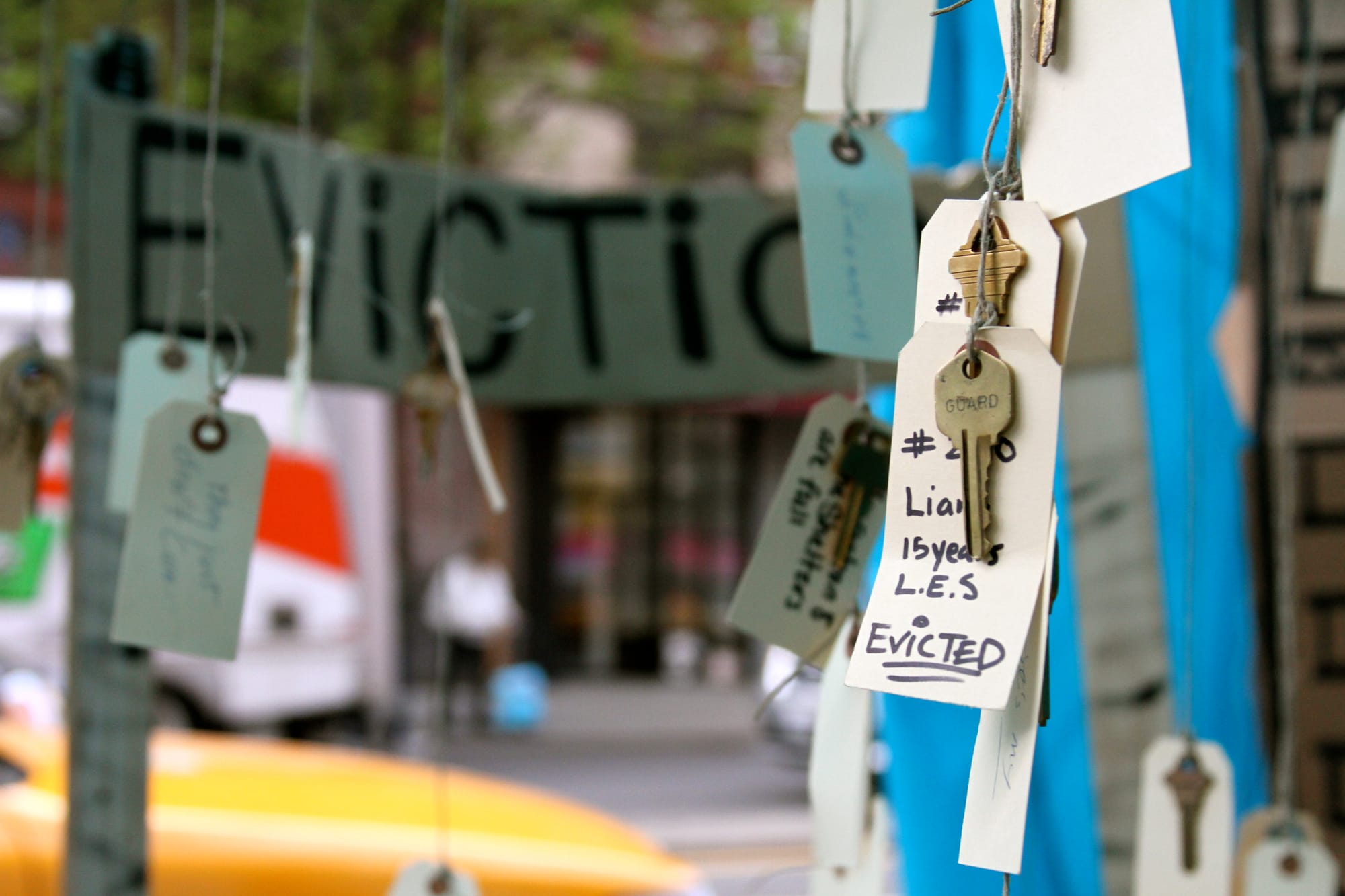
Qué debe saber si recibe una notificación de desalojo en D.C.
- Nunca ignore un aviso de desalojo. Preséntese siempre ante el tribunal.
- Busque un abogado o asesoramiento legal
- ¿Ratas, cucarachas o filtraciones en las tuberías? Puede que no deba lo que dice su casero.
- Los desalojos no pueden ser por venganza o por discriminación
- Conéctese a una organización de inquilinos.
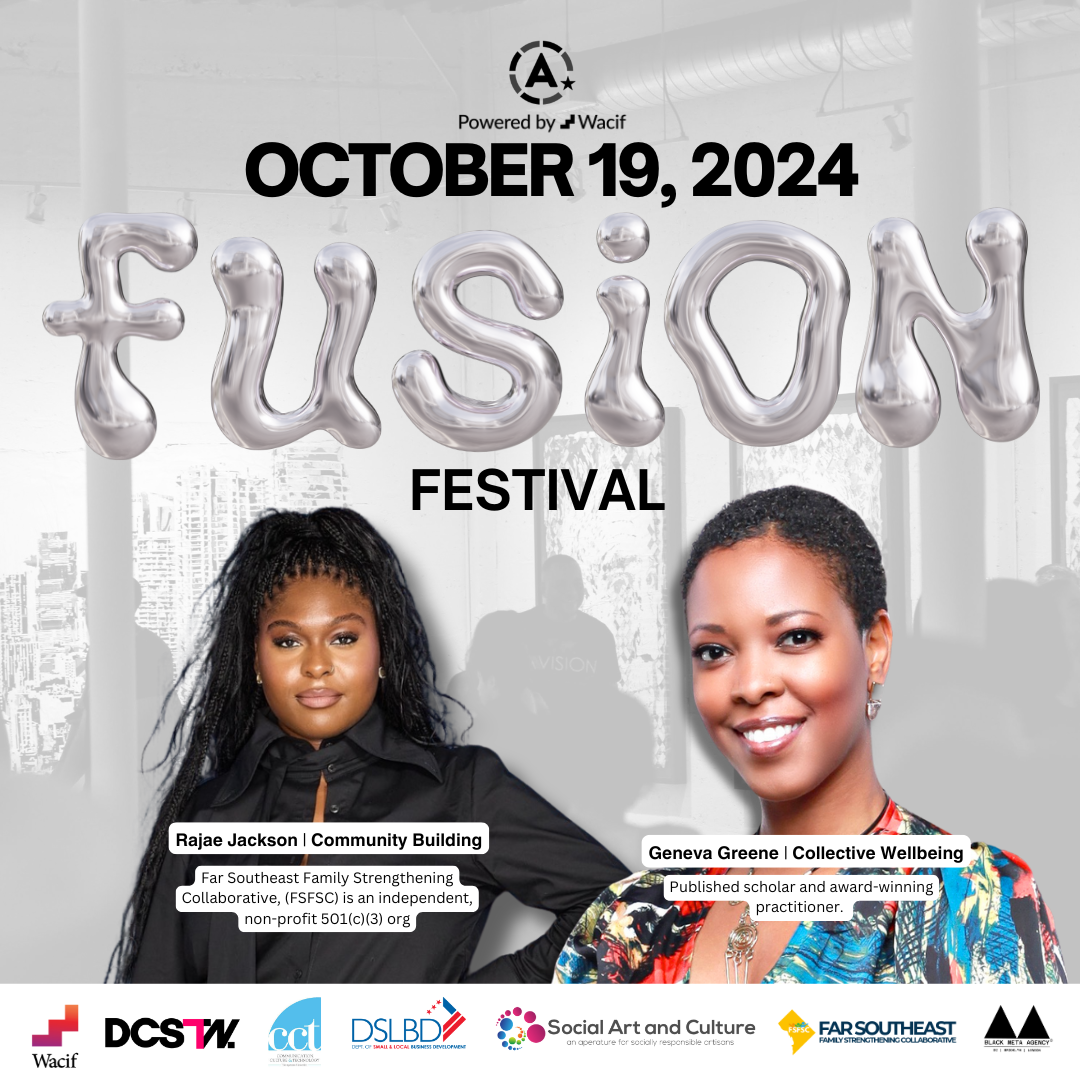

Our team is mighty but small; we can't cover it all! Here's what you might've missed this week...
- What happened when the D.C. Abortion Fund took a stand against Israel. [Slate]
- A BID worker’s chokehold on a homeless man highlights growing conflicts downtown. [Washington City Paper]
- Director Raymond O. Caldwell bucks tradition in his rendition of Romeo and Juliet. [Washington City Paper]
- Five Black women band together as ANC candidates in Ward 8. [Washington Informer]
- Lawsuit alleges construction company violated D.C.'s Water Pollution Control Act. [Washington Post]
- All those Howard festivities come with street closures. [Popville]
- The zoo's new pandas are doing stuff. [Washington Post]
- (Side note: Is keeping pandas in zoos doing more harm than good?) [NYT]

The part where we ask what you have to say.
Last week, we joined 14 other newsrooms in covering local homelessness for Street Sense’s Homeless Crisis Reporting Project. As part of this initiative, Darius Graham wrote an opinion piece about how precarious local residents’ housing situations are, citing data gathered by the Greater Washington Community Foundation (where he works).
Extreme poverty abutting extreme wealth in our region is not new. But it’s getting worse. Thirty percent of D.C. residents surveyed by the foundation said they struggled to buy food or medicine, and more than half of residents said they were worried about being able to pay rent.
Regionally, the percentage of people who expected living conditions to improve declined. D.C. residents were neutral, while expectations from their suburban neighbors were more negative than positive.
Cost of living is one of The 51st’s four core areas of coverage. So we want to know what YOU, as an engaged local resident, think about this issue. Of all the things that could be better, what’s the one change that could make the greatest difference in your life? We created a quick poll. We'll report our findings next week.
The Washrag
For this week's dose of hot goss, Colleen weighs in on a ridiculous tweet.
Why are the DC sports franchises so weird? Wizards/Commanders/Nationals/Capitals all of these brands are punching below their weight except maybe the Caps.
— Nate Silver (@NateSilver538) October 13, 2024
Nate Silver, the election modeler with an almost otherworldly talent for making people mad online, stuck the landing this week. True to form, Silver had a bad take about D.C. sports teams (notably, Silver excluded both the women’s soccer and WNBA teams in his statement), and no one was happy about it.
He called D.C. sports teams “weird,” which I guess is just the new word politicos use when they are not creative enough to come up with another adjective — Silver is a numbers man after all — and proceeded to declare D.C. the worst sports town in America.
Luckily for Nate, DCist has a lovely letter we used to address his ilk of D.C. poster. Boo!
Meet our team: Abigail Higgins
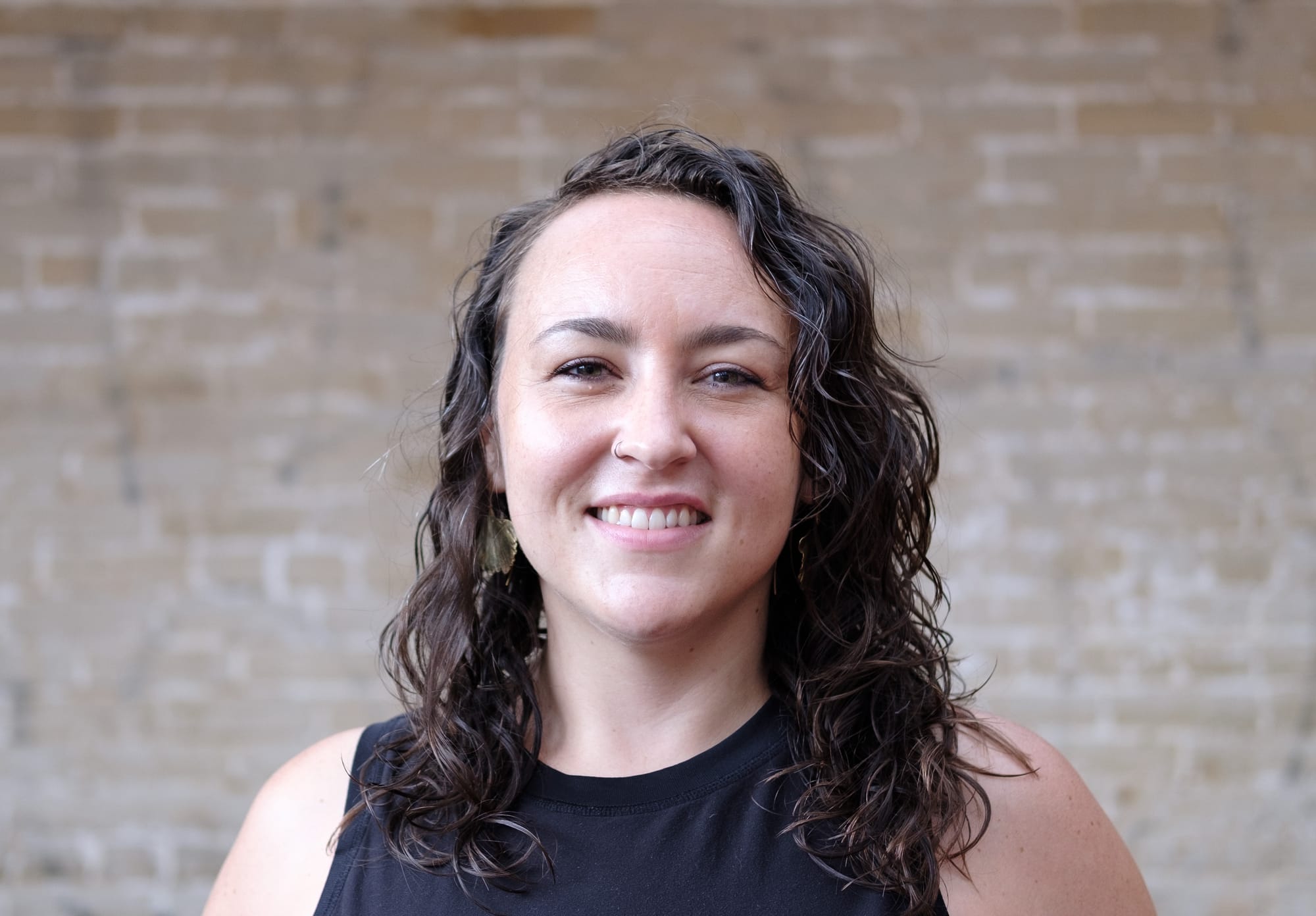
It takes a village to make The 51st. We’ll occasionally dedicate some space in this newsletter to introducing a member of the team.
What’s your relationship to D.C.? Are you from the area and, if not, why did you move here?
I grew up in the Seattle area (the other Washington!) and then spent almost a decade as a journalist in East Africa. I landed in D.C. for a short-term gig about six years ago. I assumed it would be a brief stay but then I fell in love – first with a person, then with the city – and now I can’t imagine living anywhere else.
What’s your perfect D.C. day?
Probably one of my favorite D.C. bike rides – maybe from Petworth to Fort Dupont, stopping at one of the breweries along the Metropolitan Branch Trail and then at Union Market for lunch. I’ll also take any chance I get to bike the C&O Canal Trail.
Where would you eat your last D.C. meal?
Thip Khao, and I’d get Naem Khao, the crispy coconut rice salad, and Khao Poon, vermicelli noodles in red coconut curry, and I’d order their twist on an Old Fashioned.
Your civics download
You’ll find this handy guide to public meetings at the bottom of every edition of The 51st. We’ll refine and improve along the way! So if you think we’re missing resources or you have trouble making sense of something we’ve included, please reply to this email with your suggestions or questions.
- Friday, Oct. 18 (tomorrow!) is the signup deadline to speak at the public oversight roundtable on the D.C. Housing Authority scheduled for Tuesday, Oct. 22. You can sign up here or by phone at (202) 727-8270. You'll have to provide your name, phone number or email, organizational affiliation, title (if any), and any preferred pronouns.
- The D.C. Council's Committee on Judiciary and Public Safety will hear public input on Monday, Oct. 21 on three pending bills, including a firearms suicide prevention amendment establishing the creation of a voluntary suspension registry for gun owners. Individuals could add themselves confidentially through MPD or a health care provider.
- Also during a Monday, Oct. 21 meeting, the District's Pedestrian Advisory Council will discuss the most recent draft of the DDOT Streateries Guidelines. The plan makes permanent the Streatery program launched in summer of 2020 during the COVID-19 pandemic.
- The D.C. Council's Committee on Housing will hold a public oversight roundtable Tuesday, Oct. 22 on the city's housing authority, which has been beset by a number of troubling failures in the last several years.
- The Committee of the Whole will have a public oversight hearing on the FY25 for D.C. Public Schools on Wednesday Oct. 23, which will include assessing its commitment to the Schools First in Budgeting Act, an act meant to stabilize school budgets that DCPS failed to comply with last year.
- Lastly, on Wednesday, Oct. 23, the D.C. Council Committee on the Judiciary and Public Safety will hold a hearing on staffing shortages and other issues at the Office of Unified Communications, which handles the city's 911 calls. This agency has faced sharp criticism for low staffing and mistakes that have sent emergency responders to wrong addresses.
| Council of the District of Columbia |
|---|
| 📅 All DC Council Meetings 🛠️ Sign up to testify |
| Advisory Neighborhood Commissions |
| 📅 All ANC Events 🛠️ Look up your ANC |
| DC State Board of Education |
| 📅 All DCBOE Events 🛠️ Sign up to testify |
| Washington Metropolitan Area Transit Authority |
| 📅 All WMATA Board Meetings 🛠️ Public Comment Procedures |
| Metropolitan Police Department Authority |
| 📅 Discussions by district 🛠️ Look up your police service area |
| DC Interagency Council on Homelessness Authority |
| 📅 All ICH Meetings 🛠️ Working groups: email ich.dmhhs@dc.gov |
| DC Housing Authority |
| 📅 2024 DCHA Board Meetings 🛠️ Sign up to speak + 🛠️Watch |
| All of the mayor’s Open Meetings |
| 📅 Commissions and boards and committees, oh my! |
| City Service Hotlines |
| Police, Fire, EMS: 911 Non-Emergency: 311 Mental Health: 888-793-4357 Shelter Access: 202-399-7093 |
You stuck with me until the end, much appreciated! This newsletter was truly a labor of love. I will now reward myself by catching up on Love is Blind and all of the Tyler drama.
Stay safe,
- Christina Sturdivant Sani


